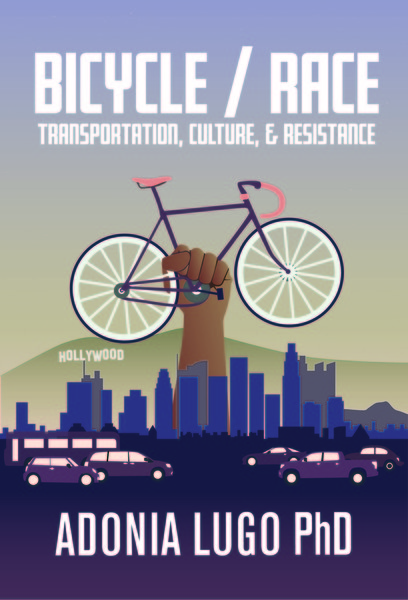This morning at about 6:50 am I dragged my sleepy, sweater-clad self a few blocks from home to help gather data for LACBC's sharrows campaign. I had been assigned to try and survey passing cyclists about their experiences cycling on 4th Street in Koreatown, which is one of the streets that LADOT marked with sharrows this summer.
I've been observing cyclists in Long Beach and LA for three years now, both as a fellow cyclist and as an ethnographer. Based on my familiarity with the region I expected to see, in this densely populated urban neighborhood I call home,
1) few helmets
2) mostly men
3) mostly Latinos.
The bicyclists passing 4th and Mariposa between 7 and 9 am this morning fit the descriptions I had in mind. However, anecdotal familiarity with who bikes in a region does not constitute the kind of data the bike coalition needs to build a case for sharrows having a positive impact on interactions between road users. Our transportation institutions' continued reliance on quantitative data means that numbers speak louder than narratives.
As part of my education in ethnography, I've learned to question the sovereignty of survey data. In this case, I wondered about whose opinions were being recorded. What kinds of cyclists are able to stop and take a survey during the morning rush hour? What if a volunteer had been posted who could not translate the survey into Spanish, as I found myself doing?
Despite the high winds roaring around yesterday afternoon, the city has not yet been dried out by seasonal Santa Ana winds, and it was crisp and cold this morning as I biked over to 4th and Mariposa. I met another volunteer, who handed me the survey forms, pamphlets with information about sharrows, and a bright green sign reading "Bike Survey!" Then I settled into the corner with my coffee, ready to flag down cyclists for two hours. I liked the idea of staying put in a place I usually zoom through on my bike.
I had quite a nice time chatting with passing cyclists, even those who did not have time to stop. That neighborhood had lots of other kinds of traffic, too, from morning dog walkers to parents walking or driving their kids to school. I didn't see any kids (or dogs, for that matter) getting toted on bikes, although I did see a teenage couple riding off down the sidewalk together on one bike.
Certain cyclists' voices get amplified while others never get heard, as many of my collaborators in the bike movement know all too well. I'm glad I got to help record the thoughts of some cyclists who may not have the time or interest to get involved in bike activism, but I'm also glad I got to help create quantitative data about biking in LA. In the United States bicycling has not yet proved its worth to those who would rather continue to view driving as the best way to get around. Being able to translate cyclists' presence and feedback into quantitative data helps legitimize activists' claims that simple signage like sharrows can make cycling feel safer.
My hope is that one day our cities will get out of this paradigm of having to prove, through numbers and checkboxes, that bicycling deserves support as a legitimate form of urban transport. One day when our policymakers look around they will see what the bicycle helps make possible: a bustling landscape of democratic transportation options, rather than wasteland of fear where people continue to drive because they feel unsafe outside their cars.

